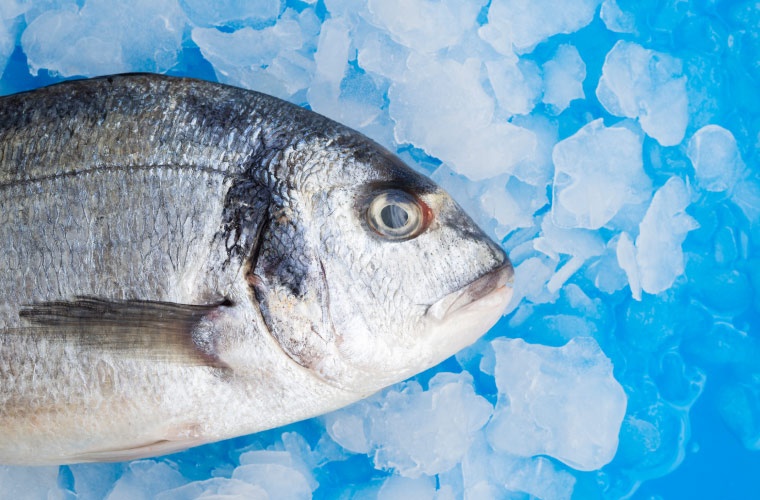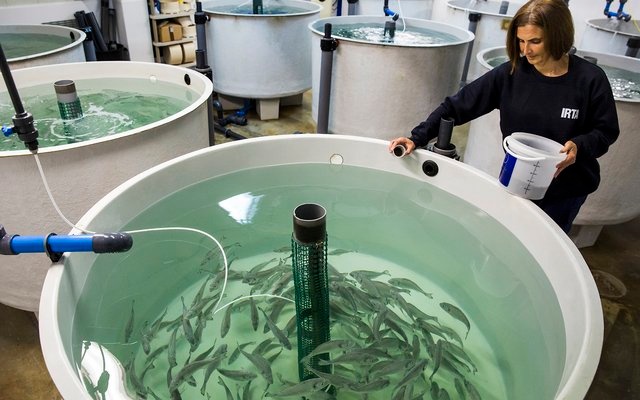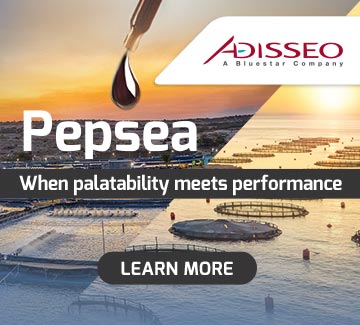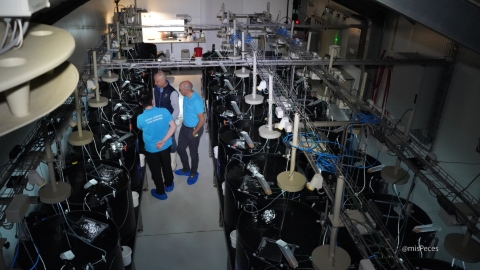
Dietary changes in fish induce temporary alterations in gut microbiota, which tend to stabilize over time. This microbial adaptability has practical implications for the development of sustainable and cost-effective alternative feeds using novel ingredients, without compromising fish gut health.
These are the findings of a recent study led by researchers at the Institute of Agrifood Research and Technology (IRTA) and the Mediterranean Institute for Advanced Studies (IMEDEA, CSIC-UIB). The study investigated the long-term adaptation of gilthead seabream (Sparus aurata) gut microbiota when shifting from a commercial feed to an alternative diet based on pink shrimp (Parapenaeus longirostris).
The primary goal of the study was to assess changes in microbial diversity and composition over a 60-day period following a radical dietary shift. The experiment was conducted at IRTA’s aquaculture facilities. To analyse the gut microbiota, researchers performed 16S rRNA gene sequencing using the Illumina MiSeq platform, targeting the V3-V4 hypervariable regions. This robust technique enabled the accurate identification of bacterial communities within the fish gut.
Pink shrimp was selected because of its nutritional similarity to the seabream’s natural diet in the wild. This allowed researchers to examine microbiota adaptation under conditions closer to the species’ natural feeding patterns.
The shrimp was frozen immediately after capture and sourced from a local fishing company. To ensure it did not interfere with the experiment, the shrimp was first rinsed with sterile seawater to remove sodium metabisulphite, preservative commonly used to prevent melanosis (black spot) that also possesses antimicrobial properties. The shrimp was then cut into 2-3 centimeters pieces to make it easier for the fish to consume.
Key findings
 Instalaciones del IRTA
Instalaciones del IRTA
After 20 days on the shrimp-based diet, there was a notable increase in microbial biodiversity, measured by the Shannon Index, along with a reduction in bacterial dominance. This indicates an initial disruption in the microbiota composition when switching to a diet more akin to natural feeding.
Over the time, the microbiota showed a progressive stabilization, with diversity and structure levelling off by day 40 and remaining stable through day 60. By the end of the experiment, the initial differences between fish fed the shrimp-based diet and those on commercial feed had largely disappeared, suggesting an adapted and balanced microbiota.
Persistent bacterial species were identified across all time points and diets, including Ralstonia, Paraburkholderia, Fulvimonas, Pseudomonas, and Cutibacterium. These species form part of a “core microbiota”, largely independent of diet and influenced by intrinsic factors such as species, age, and genetics.
The bacteria present in both the commercial feed and shrimp diet did no dominate the fish gut microbiota, reinforcing that feed-associated microbes rarely establish themselves permanently under controlled conditions.
In the initial stages, fish fed the shrimp-based diet exhibited a higher abundance of Ralstonia and Aliivibrio. This was likely due to the chitin content in shrimp exoskeletons, which acts as a prebiotic, promoting the growth of beneficial bacteria capable of degrading it. In contrast, the thermally processed commercial feed had a lower initial impact on the microbiota, likely due to reduced bacterial viability.
The researchers concluded that dietary changes induce temporary disruptions in gut microbiota, which stabilize over time. The existence of a core microbiota suggest that intrinsic factors such as species, age, and genetics play a more significant role in determining gut microbial composition than diet alone.
Practical implications for aquaculture
These findings are higly relevant for commercial fish farming, as they provide valuable insights into the use of alternative feed ingredients and provide confidence in these alternative raw materials. The study demonstrates that diets incorporating novel ingredients, such as shrimp, do not negatively impact gut health in the long term. This reassures fish farmers about the safety and reliability of alternative feeds.
By reducing reliance on expensive marine-based ingredients, such as fishmeal and fish oil, alternative feeds promote economic and environmental sustainability in aquaculture production.
Understanding the microbiota’s adaptation timeline allows for better planning of dietary transitions, minimizing stress and ensuring optimal growth performance.
Ingredients like shrimp, rich in prebiotic compounds such as chitin, can support the growth of beneficial bacteria, enhancing both digestive efficiency and fish immune health.
Reference:
Ruiz A, Alós J, Gisbert E, Furones D and Viver T (2024) Long-term adaptation to dietary shifts of gut microbiota in gilthead seabream (Sparus aurata). Front. Mar. Sci. 11:1498892. doi: 10.3389/fmars.2024.1498892


